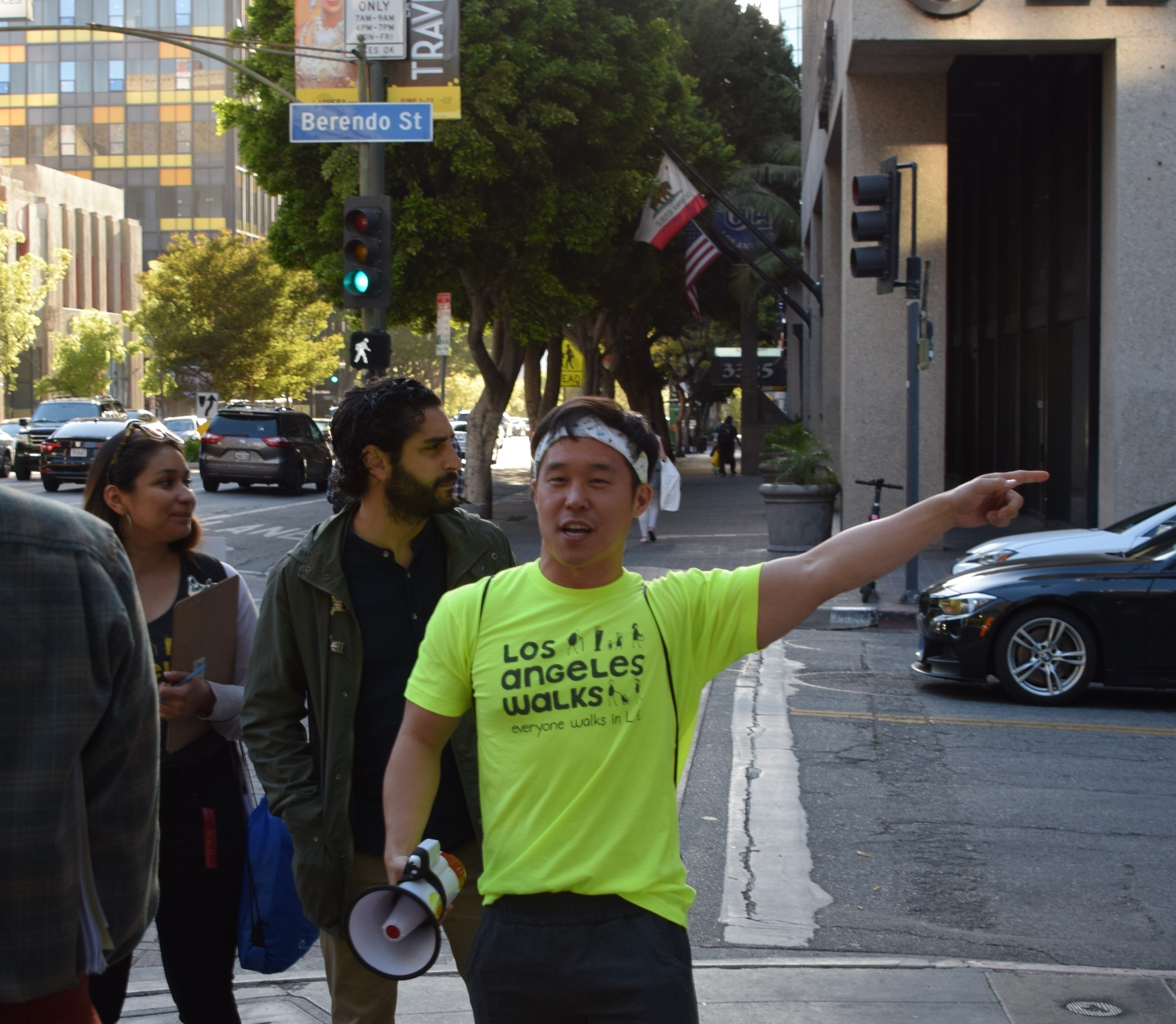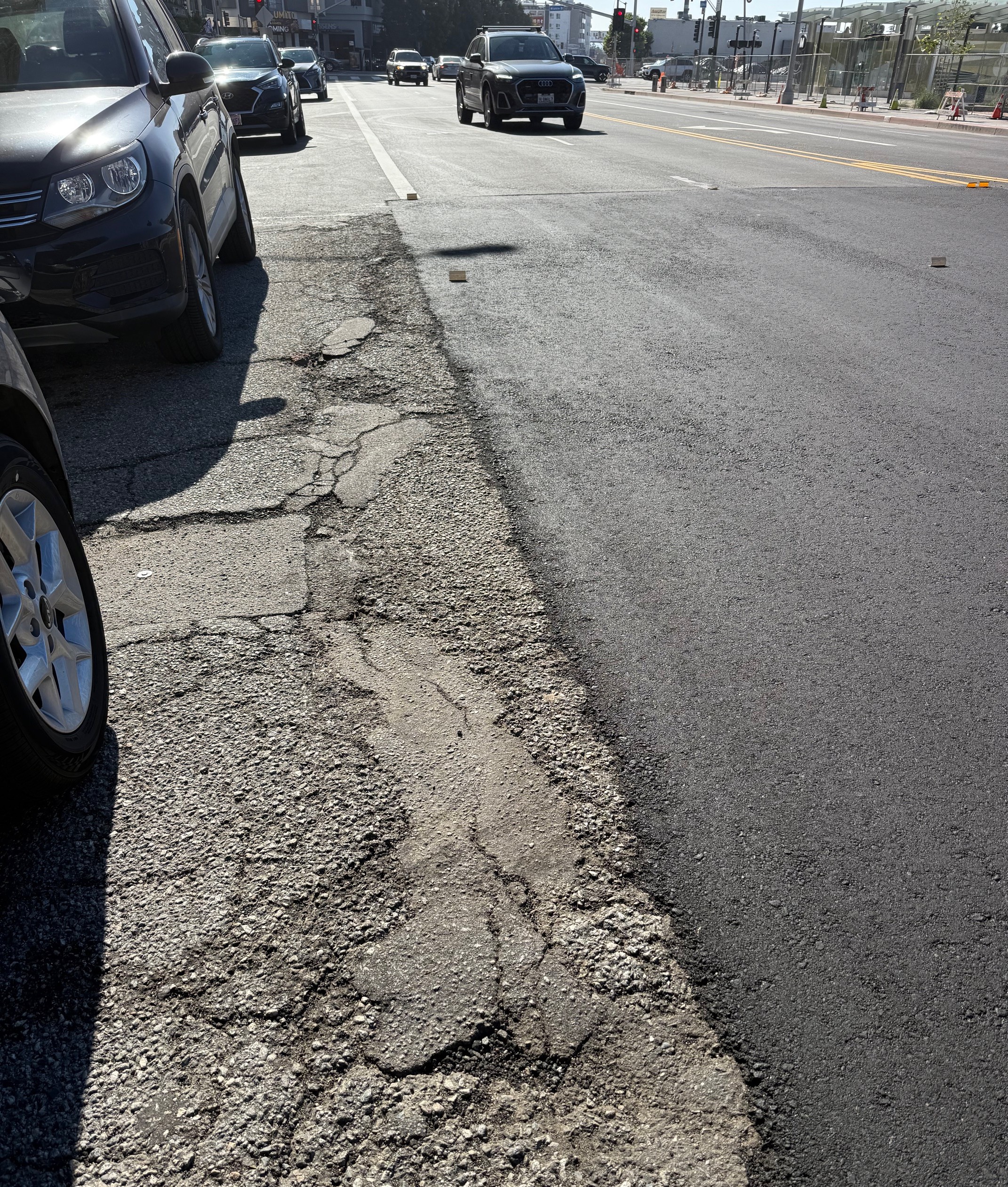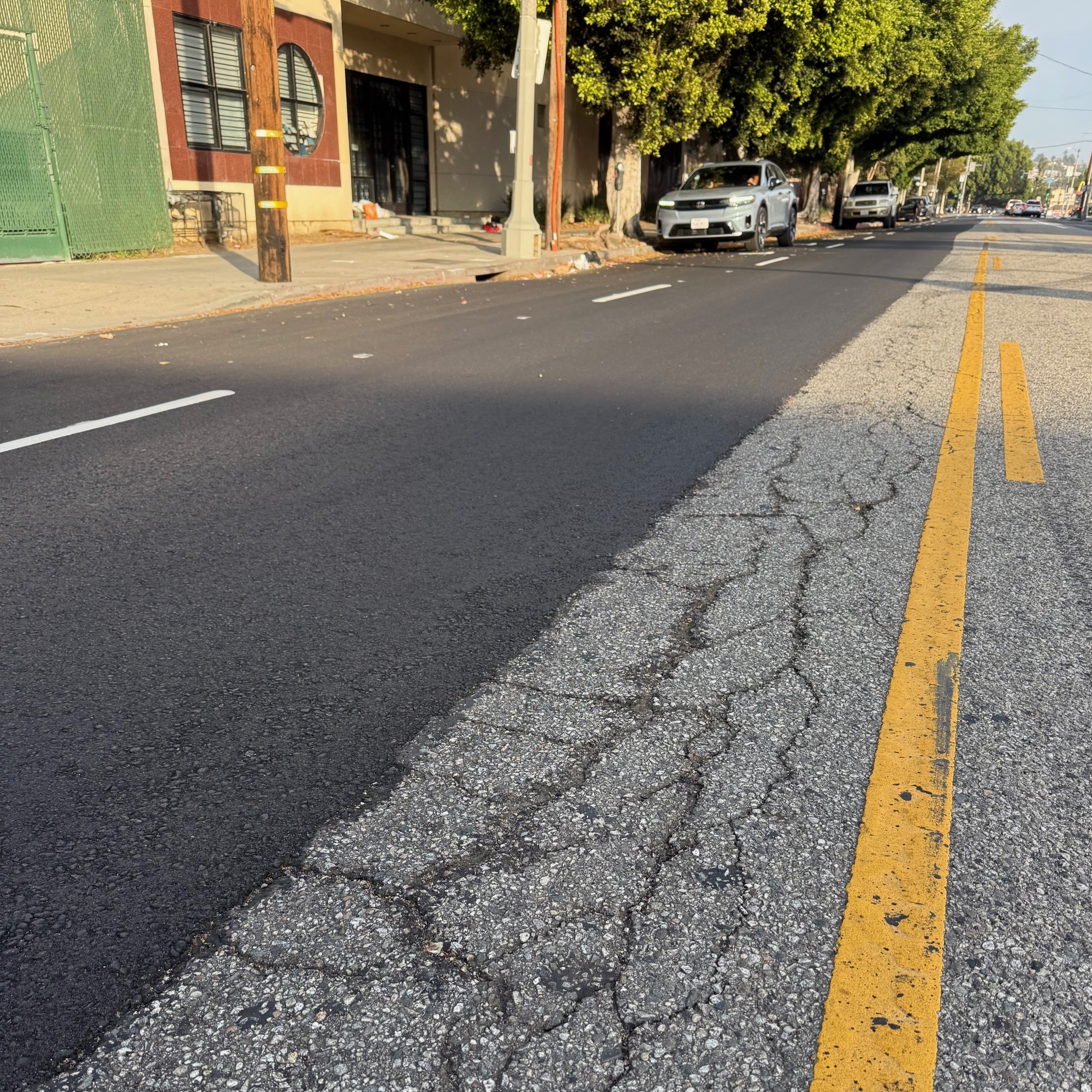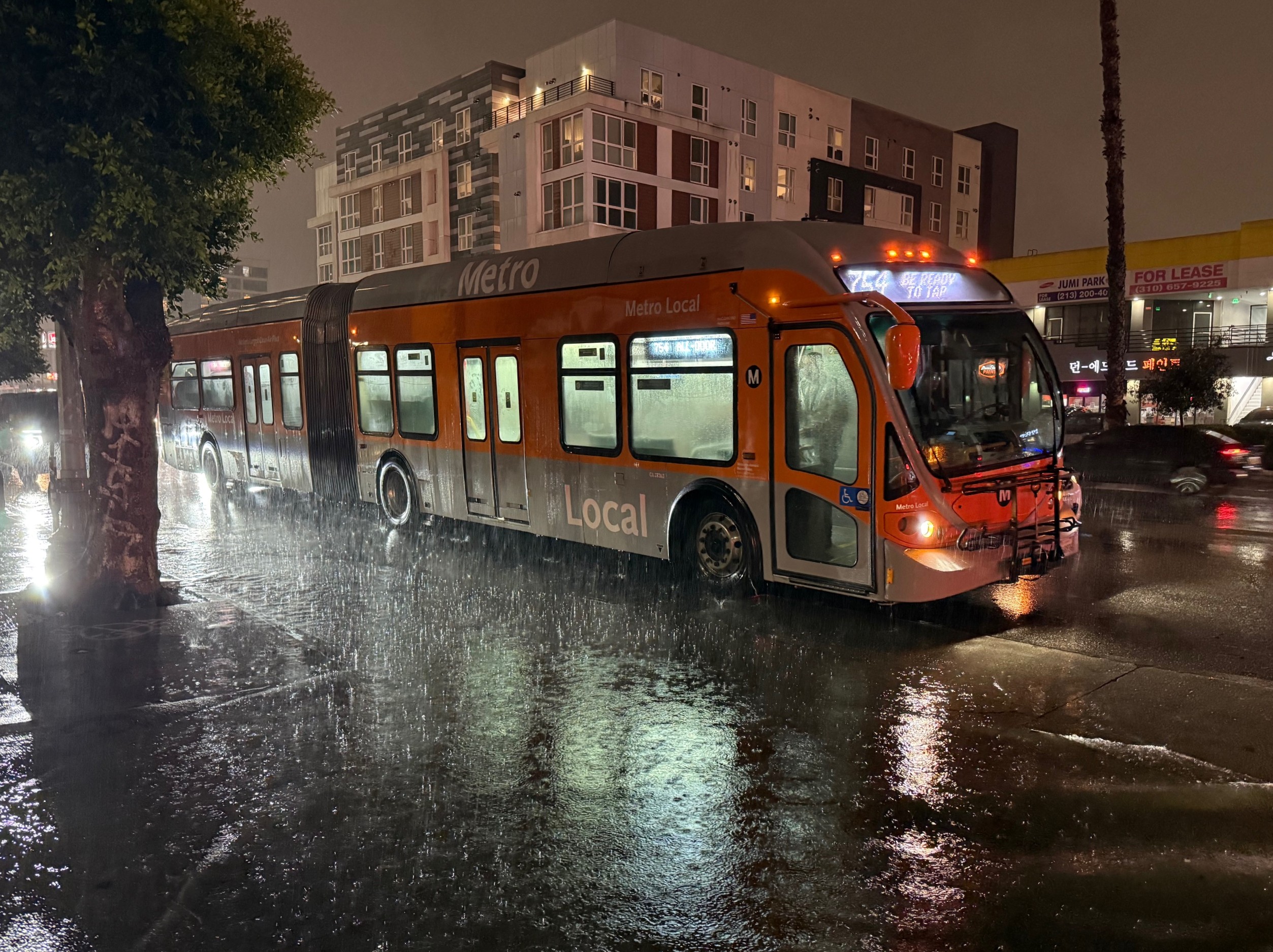John Yi is the new Executive Director of Los Angeles Walks, Southern California's premier walk advocacy nonprofit. Yi has a long background in nonprofit and community organizing work. He took the helm last month, after L.A. Walks' first Executive Director, Emilia Crotty, departed to return to the East Coast.
This interview was conducted via email earlier this month.
SBLA: Tell us about yourself and your background. Where did you grow up? What education and/or experience has shaped you?
John Yi: I was born right by Koreatown, which is sort of around where my parent's immigration story also begins. My dad first immigrated here by himself and he stayed at a boarding house on Pico. I was born not far - at Hollywood Presbyterian Hospital (up on Vermont) - and my parents ran a small flower shop on Crenshaw. They experienced the L.A. Civil Unrest and so this area in a way is where my story is rooted.
I moved out of California after the 1994 earthquake, lived on the east coast in NJ, went to undergrad at the University of Michigan, which after I graduated and moved to Washington, D.C. to work for the Tourette Syndrome Association. Afterwards, I went to Georgetown for graduate school and from there went off to live in Moscow, Russia for a year (I was a Russian studies major for both undergrad and grad). Afterwards, I moved back to L.A. and fell in love with the city.
If there is any connective tissue in my career, it is that I'm a community organizer. Whether it's organizing parents around poor-performing schools (during my time at Parent Revolution) or organizing students against Big Tobacco (during my time at the American Lung Association), my passion is in building grassroots power to push for systems change.
In addition to my past work, my personal experience, having lived on the east coast and in major cities (including D.C., Seoul, and Moscow)--some with excellent public transportation--has also informed me in this work. You don't even have to spend an hour in L.A. to see that when it comes to public transportation we have a real class, race, and equity issue. From the near universal zeitgeist that "L.A. is a car city," therefore anyone who doesn't have a car isn't really L.A., to racist and classist undertones about people who use public transit, our city has a long way to go when it comes to viewing mobility through an equitable lens for all Angelenos - both in policy and in culture.
A personal experience that really informed me on this specific work was when I got into two car crashes while bicycling on Pico and Olympic (both in K-town). While I avoided getting seriously injured or killed, the experience initially left me blaming myself and the person who was driving the car - for being careless. Only later I realized that it was because of policy and city priorities that resulted in Koreatown, the most dense neighborhood in L.A. County, having some of the largest and fastest car arteries running through its neighborhood (ie: Western, Olympic, Pico, Vermont, Wilshire, etc.) - all with little to no infrastructure for bicyclists, let alone pedestrians. Furthermore, my boyfriend and I recently bought a home in Koreatown and plan on building our future here, so this as personal as it gets.
How do you typically get around?
During the work week I commute via subway and buses. I'm lucky enough to live in an area that is pretty central to some major subway and bus lines. It's actually faster for me to take public transportation over driving. I still though use my car on weekends or for shopping runs. Occasionally, I also bike but primarily for recreational purposes.
In recent years, Southern California is experiencing a backlash against Vision Zero, road diets, and other safety improvements. How do you think safe streets advocates can make progress in the face of hostility from some individuals, groups, and even elected officials?
To combat the backlash against Vision Zero and, in general, safety improvements on our streets, we'll need to start talking about our work beyond just safety issues. A society and its elected leadership that supports safer and more walkable streets is indicative of a city that is investing in community and sustainability - there's no way around it. Whether it's lowering greenhouse gas emissions, encouraging local businesses by and for the community they reside in, creating fellowship among neighbors, increasing home ownership and stakeholdership, walkable and safe streets may not be the silver bullet but it is by all means a prerequisite for stronger communities.
I don't say this in just a lofty idealistic way.
With the growth of electric cars, the overturning of traditional modes of transportation via ride-sharing, e-scooters, and an increasingly expanding and growing urban core, walkable and safe streets shouldn't be a luxury but an essential first step in re-imagining what a city of the future should look like. Though people may be upset about a bike lane or congestion pricing, it is the responsibility of groups like Los Angeles Walks to show the public that this goes beyond traffic and commute times; rather our cause is part of a larger existential question of whether our city will be liveable at all.
What are your top priorities for Los Angeles Walks in the year ahead? And for the next few years?
My top priority for Los Angeles Walks in the year ahead is to continue the great work we are doing.
Currently we are are working with communities with some of the greatest need for safer streets. Whether it's partnering with parents to figure out how to engage the city on street repairs, or leading walk audits to gain a deeper understanding of why our streets are the way they are, our main goal right now is to build advocacy capacity among our fellow Angelenos.
We will continue to show the devastating impact of car crashes on families and individuals. We will also continue to challenge the almost flippant attitude we have about speeding and our culture of victim-blaming. In the years ahead, we hope to continue to build this movement and eventually make it so that the pedestrian voice is a must-have for any decision making when it comes to our streets and urban infrastructure.
Low-income communities of color continue to bear a disproportionate brunt of L.A.'s unsafe streets. How do you plan to incorporate equity into the work of L.A. Walks?
Equity and representation must be reflected in all that we do. From making sure our board and staff are diverse, to assuring that the communities we engage are those with the greatest need, Los Angeles Walks has been and will continue to be intentional about reflecting the diversity of our city.
A key part of this is elevating stories of communities often left out of the discussion when it comes to urban planning. This goes beyond sharing stories of those most disadvantaged in our regular communications. We need to start putting our community members in positions of leadership and visibility, whether it's building leadership capacity to one day run for office, or to be agents of changes for other intersectional issues.
Walking can be invisible - though everyone walks, very few people tend to identify themselves as pedestrians. Walking can also be seen as low status - a mode for people not successful enough to have a car. How can you and L.A. Walks change the perception and status of walking?
Stories stories stories - that's how you change perception.
Everyone walks in L.A. and so everyone has a story to tell of that experience, of lack thereof. The more stories we share of our peers, our leaders, our neighbors, our colleagues and the joys and frustrations of walking in L.A., the more normalized the experience will be.
There's also a lot we're missing just being in our cars; we miss entire communities, cultures, and corners of L.A. when we just go from A to Z and miss everything in between.
Of course, all of this is only possible if we have a strong, robust, and reliable public transportation system. City leaders and civic institutions/buildings can lead the way in making sure all their events and programs include options for pedestrian access, just the same way that every event invite in L.A. includes whether parking/valet is available or not.
This is a question Streetsblog L.A. typically ends interviews with. If you had a magic wand and, overnight, could change any aspect of Southern California mobility or livability, what would you change?
If I could change something overnight it would have nothing to do with mobility at all. It would be to increase the home ownership rates in Los Angeles.
Today, less than half of Angelenos own their homes. Our ownership rates are the lowest compared to other large metro areas. Regardless of whether you rent or own, we should fight for safer streets. However, this fight is not truly won if we insert bicycle lanes in a long-established community that is eventually priced out due to development and gentrification. And that perhaps is what is one of Los Angeles Walks' greatest strengths: our work goes beyond simply safe streets. Our work is intersectional with so many issues - it opens up so many opportunities in areas of social justice, such as increasing home ownership, fighting homelessness, increasing access to green space, combating food deserts, and all meanwhile saving lives from senseless car violence.
Anything else you’d like to tell SBLA readers?
I was born in Los Angeles but have lived all across the country and the globe. There is indeed no place like L.A. and if we can re-imagine and execute what the city of the future looks like here, we can create a national model that can lead to stronger neighborhoods and communities.







